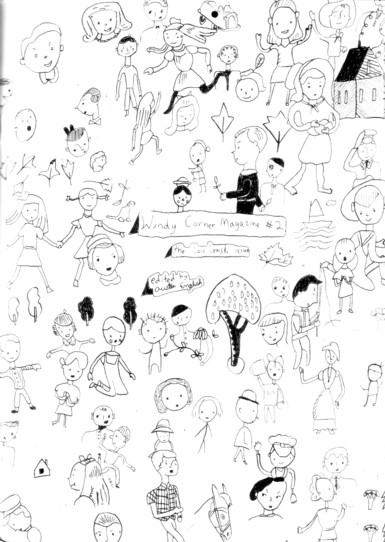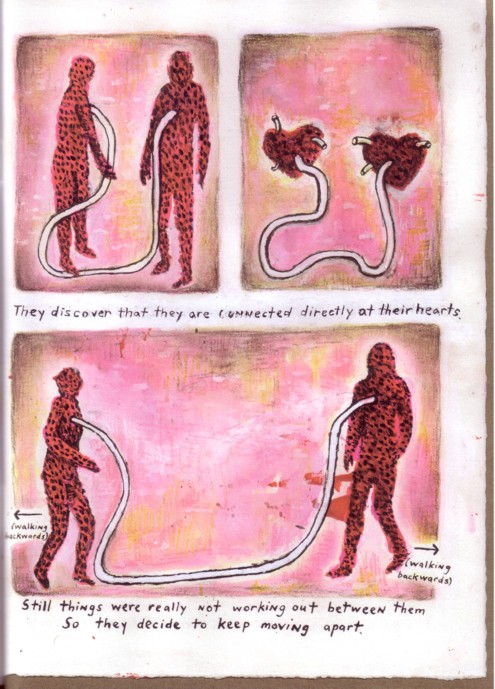Closed Caption Comics #9
Let’s keep this between you and me, but I’d swear that I’m getting dumber in my old age. I’m well aware of the facts that comics, or stories in general, don’t have to follow a linear progression to make a point or to be solid artistic work. Still, there were more than a few times in reading these stories that I would finish a piece and have only the dimmest idea of the point of the story. Does that make me a dipshit, or does that mean the the artist maybe didn’t quite hit their mark? Hey, it’s not for me to decide, which is why I gave you the option of deciding for yourself instead of proclaiming myself LORD OF ALL COMICS CRITICISM and saying that you have to agree with me. This is another one of those anthologies that doesn’t have a table of contents but does list the artists in the order of their appearance, which at least gives you a fighting chance to figure out who did what. First up is Buttstains by Pete Razon, which looks terrible until it’s made clear that the lights were off. Some creatures are hanging out, other creatures come over that also want to hang out, characters actually speak in things like “lol,” then it’s over, leaving me confused as hell. Next up is Venus and Furz by Lane Milburn, and it’s a more straightforward piece of fantasy (although it very nearly became a tentacle rape story) with a gigantic ending. Mind Your Business Nutty Butty by Conor Stechschulte is next, in which a series of slack-jawed yokels live their lives while Nutty Butty (a slow, if not retarded, child) wanders through their midst. He sees his mother (?) attacked by her boyfriend (??) and decides to take matters into his own hands, and it ends up being an expertly told story of revenge. Brother’s Keeper by Noel Freibert (probably) is next, and this is another one that was fascinating in concept but ended up leaving me a bit lost. See, there’s one brother who is being raised as an item that’s not to be damaged so that another brother can eat him and restore himself. When the first brother damages himself this screws everything up, leading to an even more baffling epilogue. Ryan Cecil Smith then comes in with The Sandbox of Hercules, and it’s at this point that I officially start to feel stupid. It’s a great story for the most part, as Hercules is seeing a therapist and a minion runs across a model of their compound and everyone in it, but the ending left me a bit confused again. Is it possible to just have a “stupid day?” Maybe that was my problem, as this is Ryan Cecil Smith we’re talking about, and he’s been nothing but tremendous from what I’ve previously been able to tell. Moribund by Chris Day is a series of seemingly unconnected images with an oddly satisfying conclusion. I also liked the next (probably) untitled piece by Erin Womack involving peasants and their fear of a couple. Mr. Fred by Andrew Neyer is a silent day in the life type thing that blends a little too seamlessly into the next story by Mollie Goldstrum dealing with fighting the temptation to get up once you get hypnotized by falling snow. Molly O’Connell and her Squeeze Brothers has probably the most visually inventive piece in the book, dealing with some brothers (duh) and their new teevee show, although it’s hard to explain much more about it than that without ruining it a bit. Conor and Lane follow that up with the strongest overall piece in the book called Mystery High. A teacher has been killed, you see, and a high school couple decides to investigate. They get in way over their heads very quickly and that last page killed any doubts I might have had about buying this anthology as a whole. Yes, my decision making process really does have some sort of undefined tipping point like that. The last piece by Zach Hazard Vaupen didn’t do a thing for me, but that may be because it was all about farts, bleeding eyeballs and mildly sloppy anime characters. It did strike me that that art could still be fantastic in another setting, or with another story, or in something that wasn’t quite this one, so I’ll try and keep an eye out for him in the future. So overall I’d say it’s worth it, $20 price tag and all. The stories in here are complete, which is always a nice selling point for an anthology, and you get more than enough time to form an opinion about everybody involved. That and any anthology with this level of quality that has made it to #9 (unless they’re just making that up) deserves some support, don’t you think? $20





 Posted by Kevin
Posted by Kevin 






